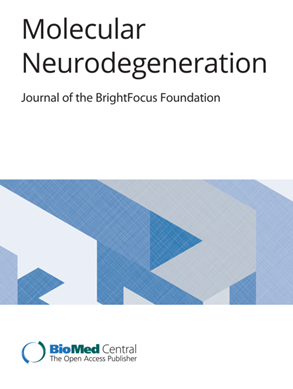研究路易体痴呆的模型
IF 17.5
1区 医学
Q1 NEUROSCIENCES
引用次数: 0
摘要
路易体痴呆(LBD)包括以认知波动、视觉幻觉和帕金森症为特征的神经退行性痴呆。由于症状重叠,LBD与阿尔茨海默病(AD)的临床鉴别仍然很复杂,但大约25%的痴呆病例死后被诊断为LBD,主要通过α-突触核蛋白聚集物、tau缠结和淀粉样斑块的存在来识别。这些病理特征使LBD成为帕金森病(PD)和AD的共病,超过50%的LBD病例表现出共病。LBD的混合病理使综合模型的发展复杂化,这些模型反映了LBD的病因、临床和病理特征的全谱。虽然现有的动物和细胞模型促进了PD和AD研究的重大发现,但它们在捕捉LBD独特的致病机制方面缺乏特异性,限制了LBD特异性治疗途径的探索。本文评估了广泛使用的PD和AD模型与LBD的相关性,特别关注它们复制人类疾病病理和评估治疗效果的能力。此外,我们讨论了对这些模型的潜在修改,以促进对LBD机制的理解,并提出了创新的研究方向,旨在开发具有增强病因学,面部,预测和结构效度的模型。本文章由计算机程序翻译,如有差异,请以英文原文为准。
Research models to study lewy body dementia
Lewy body dementia (LBD) encompasses neurodegenerative dementias characterized by cognitive fluctuations, visual hallucinations, and parkinsonism. Clinical differentiation of LBD from Alzheimer’s disease (AD) remains complex due to symptom overlap, yet approximately 25% of dementia cases are diagnosed as LBD postmortem, primarily identified by the presence of α-synuclein aggregates, tau tangles, and amyloid plaques. These pathological features position LBD as a comorbid condition of both Parkinson’s disease (PD) and AD, with over 50% of LBD cases exhibiting co-pathologies. LBD’s mixed pathology complicates the development of comprehensive models that reflect the full spectrum of LBD’s etiological, clinical, and pathological features. While existing animal and cellular models have facilitated significant discoveries in PD and AD research, they lack specificity in capturing LBD’s unique pathogenic mechanisms, limiting the exploration of therapeutic avenues for LBD specifically. This review assesses widely used PD and AD models in terms of their relevance to LBD, particularly focusing on their ability to replicate human disease pathology and assess treatment efficacy. Furthermore, we discuss potential modifications to these models to advance the understanding of LBD mechanisms and propose innovative research directions aimed at developing models with enhanced etiological, face, predictive, and construct validity.
求助全文
通过发布文献求助,成功后即可免费获取论文全文。
去求助
来源期刊

Molecular Neurodegeneration
医学-神经科学
CiteScore
23.00
自引率
4.60%
发文量
78
审稿时长
6-12 weeks
期刊介绍:
Molecular Neurodegeneration, an open-access, peer-reviewed journal, comprehensively covers neurodegeneration research at the molecular and cellular levels.
Neurodegenerative diseases, such as Alzheimer's, Parkinson's, Huntington's, and prion diseases, fall under its purview. These disorders, often linked to advanced aging and characterized by varying degrees of dementia, pose a significant public health concern with the growing aging population. Recent strides in understanding the molecular and cellular mechanisms of these neurodegenerative disorders offer valuable insights into their pathogenesis.
 求助内容:
求助内容: 应助结果提醒方式:
应助结果提醒方式:


